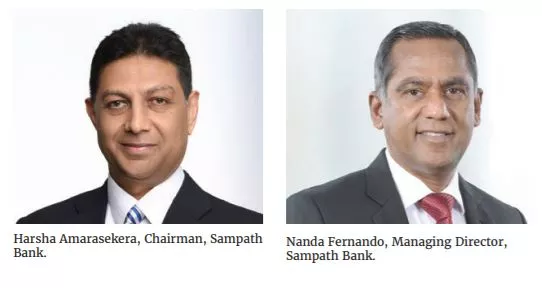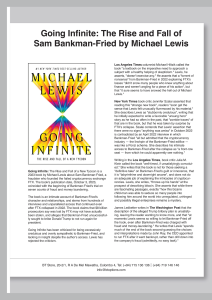
In a bid to safeguard the economy from the consequent challenges of COVID-19, the Central Bank of Sri Lanka (CBSL) requested commercial and specialized Banks to extend the debt moratorium to affected businesses and individuals in addition to the moratorium already granted to tourism and passenger transportation sectors. Acting in conformity with the directives of the CBSL, Sampath Bank took immediate steps to implement the Government mandated relief measures. The Bank leveraged its well-developed IT platforms to operate the business seamlessly during the lockdown period while providing services via its branch network in strict conformity with the health guidelines issued by the authorities.
Sampath Bank’s diversified and resilient business model proved to be valuable in navigating through the current macro-economic environment and has ensured a positive development on the bottom line of the Bank while ensuring the safety and well-being of the staff and customers during this turbulent time. Sampath Bank posted a profit after tax (PAT) of seven billion rupees for the first half of 2021, against 3.9 billion rupees for the same period in 2020. This significant increase of 78.1 percent in profit after tax resulted from a 16.7 percent increase in total operating income coupled with strict cost controls and other innovative efforts implemented by the management. Considering the impact and uncertainty created by COVID 19 in the 1H 2020, the Bank provided a sufficient amount of impairment provision in that period. Since the Bank brought forward a sizable buffer of impairment provision from 2020, it did not require similar provisioning in 1H 2021. As a result of the growth recorded in PAT, the return on Average Shareholder’s Equity (ROE) increased by 533 bps to 12.91 percent as of June 30, 2021, compared to 7.58 percent reported at the end of the year 2020. Return on Average Assets (ROA) increased to 1.67 percent as of June 30, 2021 against the 1.09 percent reported for 2020. The Bank recorded a PBT of 9.5 billion rupees for the first half of 2021 compared to 5.3 billion rupees reported during the corresponding period in the previous year, denoting a growth of 79.3 percent. Driven by strong performance recorded by the Bank in the first six months of 2021, the Sampath Group too posted significant growth, with Group PBT and PAT growing by 86.1 percent and 88.2 percent over the figures reported for the corresponding period. In the period under review, the Group recorded a PBT of 10.1 billion rupees and PAT of 7.5 billion rupees compared to the PBT of 5.4 billion rupees and PAT of 3.9 billion rupees recorded in the corresponding period.
The Bank’s Net interest income for the period under review was rupees 19.2 billion compared to the 17.4 billion rupees reported for the corresponding period in the previous year, reflecting an increase of 10.4 percent. Although interest income declined by 9.1 percent, it was compensated by the decrease recorded in interest expenses, enabling the Bank to record a growth in NII. The pandemic induced uncertainty and the global economic recession prevented businesses and individuals from investing in new projects and business opportunities, creating a lower demand for credit. The lower demand for credit and the low-interest rate regime are the main reasons for the 9.1 percent drop in interest income. The interest income of the Bank stood at 41.9 billion rupees compared to 46.2 billion rupees recorded for the corresponding period. Meanwhile, owing to prudent fund management strategies, Sampath Bank could re-price its liability products in line with the prevailing lower interest rates. Timely re-pricing helped the Bank to register a decline in interest expenses. Interest expenses dropped by 21 percent to 22.7 billion rupees in the first half of 2021 from 28.7 billion rupees recorded for the same period in the previous year. This helped boost the Bank’s NIM to 3.42 percent as of June 30, 2021, which is 12 bps higher than the figure recorded at the end of 2020.
Net fee and commission income (NFCI) recorded a growth of 33.5 percent from the figure reported in the corresponding period of the previous year. This segment comprises income from various sources such as credit, card, trade, and electronic channels. Growth in this segment was driven mainly by card related activities. Comparatively higher business activities in Sri Lanka during the first half of 2021, was the main reason for the increase in cardrelated commission income.
Net other operating income increased by 27.9 percent in the first half of 2021 compared to the corresponding period in the previous year. This growth was mainly backed by the increase in realized exchange income stemming from the 7.5 percent depreciation of the Sri Lankan Rupee against the US Dollar. During the first six months of 2021, the Bank recorded 3.3 billion rupees as net other operating income compared to 2.6 billion rupees reported in 1H 2020.
The Bank recorded a Net trading income of 46.3 million rupees in the period under review, compared to the 106.5 million rupees loss registered in the corresponding period of the previous financial year. On this basis, the Bank’s net exchange income from foreign exchange transactions amounted to three billion rupees for the period under review. Operating expenses, which stood at 9.5 billion rupees during 1H 2020, increased to 10.9 billion rupees during the period under review, reflecting a YoY increase of 14.7 percent.
Meanwhile, the Bank’s Costto-Income ratio (excluding taxes on financial services) decreased marginally to 39.5 percent in the first six months of 2021, from 40.2 percent reported for the corresponding period in 2020. This was mainly due to the management’s strict controls and other innovative efforts to contain other operating expenses. The impairment charge for the period under review dropped by 32.8 percent compared to the first half of the year 2020 to reach 4.9 billion rupees by the end of the period under review. Even though the impairment charges decreased compared to the first half of the last year, this did not include reversals of any impairment provision made in the previous year.
The Bank provided a sizable amount of impairment provision during the first half of 2020 after considering the impact and uncertainty created by COVID 19 on the economic front during that time. Since then, the Bank has adopted a consistent approach to ensure impairment provisioning is in line with customers’ potential abnormal credit behaviors after the end of the moratoriums. Despite signs of an economic recovery apparent in Q1 2021, the Bank decided to continue with its prudent approach for impairment provisioning based on the same assumptions applied at the end of 2020. Following a reassessment of these assumptions, the Bank decided to apply an even more prudent approach in Q2 2021, in light of the evolving impact of the COVID 19 third wave and the extension of the moratorium framework. Accordingly, during the quarter under review, the Bank identified many customers deemed to be operating in elevated risk industries and reclassified them under a higher credit risk category (stage 2).
Sampath Bank’s total Asset base increased to 1.17 trillion rupees at the end of the second quarter of 2021 from 1.11 trillion rupees recorded at the end of last year.
The Bank’s deposit base recorded a growth of 13.2 percent (annualized) from the level reported at the end of 2020. The total Deposit base at the end of Q2 2021 stood at 945 billion rupees compared to 887 billion rupees reported at the end of 2020.






